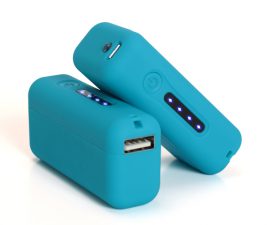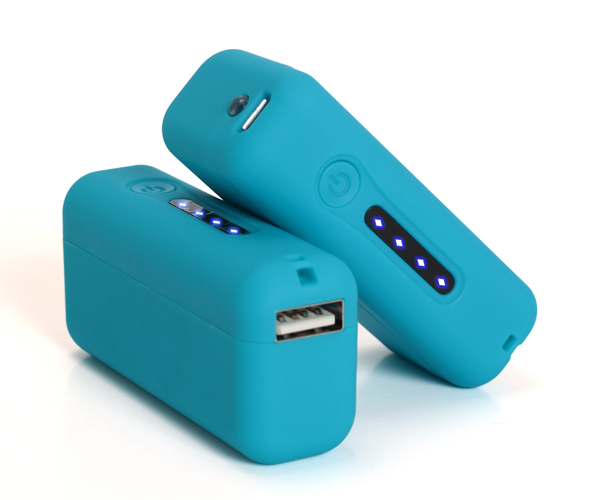Written for C&I by Jeremy Gough
 The convenience landscape is an ever changing one, and stores are having to continually evolve as they seek fresh ways to stay profitable in the face of new challenges and new competition.
The convenience landscape is an ever changing one, and stores are having to continually evolve as they seek fresh ways to stay profitable in the face of new challenges and new competition.
While significantly improving the food offer has been the most noticeable way operators have adapted to survive, there have been plenty of other examples of them adopting innovative strategies to try to cope with the sales drop-off in some categories. And it is not just traditional convenience powerhouse such as tobacco that are facing difficult times.
The most recent state of the industry report from the Australasian Association of Convenience Stores (AACS) reveals that the channel recorded an $88 million decline in value from communications, printed materials and travel tickets.
The AACS Chief Executive Officer, Jeff Rogut, said this drop-off was not surprising given the way new technology is shaping the way we live … and he sensed an opportunity.
“These categories have each lost further relevance in physical retail,” he said. “And we need to seek new avenues of growth in these or totally new categories based on customer demand.”
One area which most certainly represents an opportunity is increasing sales of gifts and gadgets. The march of technology and the arrival of a wider range of affordable and small footprint gadgets and gizmos means the channel is more suited to satisfying this demand than ever before.
Specialised Petrol and Convenience Buying and Retail Development Group, United Convenience Buyers (UCB), says that the role of gifts and gadgets has never been more relevant for C-Stores.
“There’s an oft quoted statistic that 6% of shoppers wait until the very, very last moment to buy that special someone a gift,” said a UCB spokesperson. “If that’s true, C-Stores can play a role in ensuring no one has an excuse for not giving a thoughtful gift.”
While gift giving has long been a fundamental part of human relationships, social networking sites such as Facebook are creating greater awareness of upcoming gift giving occasions such as birthdays and special one off events. At the same time, technology is changing how this gift giving occurs.
Handsets and wireless broadband devices can make good gift ideas and create sales, and they also promote repeat business with recharge, and thus drive future foot traffic. With consumers across all ages and demographics now reliant on being connected to their devices, tech accessories are excellent products for the modern convenience and impulse store to stock. And the fact that they traditionally deliver high dollar margin returns per unit means they can also be very helpful in driving overall shop profitability.
According to the AACS state of the industry report, sales of mobile accessories have grown by more than 20% in the last couple of years.
“Wearable technology is becoming commonplace for consumers, with blue tooth headphones for example, leading the charge in becoming sleeker and less obtrusive,” said the UCB spokesperson. “With C-Stores playing a larger and more frequent role in shoppers active lifestyles, it’s no secret that having a broad assortment of on the go gadgets, is a must have.”
As with all categories, the relative success of gift items is to some extent dependent on the exact location of the store and the demographics of the customers. Different locations then meet different needs. For stores in the city where there are lots of offices nearby, extra products like HDMI cables and powerboards are good sellers. On the other hand stores located near apartments might find audio cables and Bluetooth earphones for jogging prove particularly popular.
Eastrade International, which sells a wide range of electronic accessories, says it is most important that operators talk to their customers and fully understand their needs and habits.
“The statistics tell us 88% of Australian population now owns a smartphone but the vibe at the moment feels more like 95%,” said Eastrade International Marketing Director, Hongshin Tan. “That is to say that 88% of customers walking into the store are potential customers.”
Mr Tan says that convenience stores must have a mobile accessories range available to cater for all mobile devices in the market. These should include wall chargers, car chargers, portable chargers, earphones, USB cables, travel adapters and so on.
“Phone chargers, cables and travel adapters are among the most common emergency purchase in the general merchandise category,” he said. “And it’s not just emergency purchases … an average person now has an average of at least two mobile devices, so it’s a no brainer to have a few more lying at home and charge wherever you want.”
Of course, other channels are also well aware of the potential of the booming gifts and gadgets category, but convenience does still have a few competitive advantages. The edge the channel has in attracting busy, connected customers is that convenience is really a way of buying time. Frantic office workers or active people seeking to maximise their leisure time don’t necessarily want to go all the way to a JB Hi-Fi or Telstra shop just to buy a USB cable. They are increasingly expecting that convenience stores will stock the mobile accessories they need, and this is why operators need to ensure they do their research and get their ranging right.
While convenience cannot stock the range of tools that bigger stores can, nor compete on price with items that can be bought in electronics shops, what it can do is offer ease of purchase and convenience on the go for any forgetful customers who need to find a quick last-minute present. Many customers are willing to pay extra for the convenience factor, the ease of purchase, and just to be freed up from gift shopping duties to do other things.
While the major supermarkets are increasingly trying to be ‘go to place’ for just about everything, at least for the moment, the main reason people go to supermarkets in Australia is still to get their groceries.
Mr Tan says this works to convenience’s advantage.
“It’s the psychology of ‘you don’t buy USB cable that you charge your precious iPhoneX for at the same place you buy your vegetables’,” he said. “And with the specialist phone shops, the major phone retailers for the past few years have portrayed their ranged mobile accessories as good quality but expensive.”
Eastrade believes that, with the wealth of online knowledge and access to online prices, customers are getting smarter and smarter so they really know the value of the product.
Stores can place product around the cashier area, or the queue area, to help boost sales. Mobile accessories are among the most expensive items of merchandise for convenience stores to stock, so it is also sensible for stores to present them at a location where staff can keep an eye on things and reduce the risk of theft.
Eye catching packaging can help attract customer interest, and clever use of point of sale material and stands and counterstands can also gain attention. The basics are true whether a store is selling mobile phone accessories, gift cards, or sunglasses. Convenience store customers are commonly in a hurry, and they need to be reminded of the offer and it needs to make an impact. Most suppliers have a suite of display solutions ranging from pre-packed counter / shelf display units to more permanent displays that are designed to attach to the top of standard gondola fixtures.
Obviously, gift products sell particularly well on certain occasions. While birthdays may be scattered throughout the year, operators can really focus special attention on the category when events like Christmas, Father’s Day, or Mother’s Day roll around. Operators need to think about the sort of items that might sell well around these occasions, and then ensure that they are adequately stocked; that the products are well presented; and that their presence is adequately communicated to the customer.
According to Pacific Optics – which offers accessories for mobile phones and tablets, as well as many other gift items – operators should talk to their regular customers, to know their interests and hobbies, and to ask them what gift items they would like to see sold.
The company says stores should prepare for special occasions well in advance, and that bundling all of potential gifting products into one module will reap strong sales results.
Stocking a varied range of gifts and gadgets can make a store more interesting and help persuade customers to stay and browse and, of course, to spend. As convenience and impulse outlets evolve to cater to a wider range of demands, customers are increasingly expecting to find those last-minute gift solutions on the C-Store shelves. In a world where so many traditional sales powerhouses are in decline, operators who don’t stock a decent range of gifts and gadgets may well be left counting the cost.
AT A GLANCE
- It is an oft quoted statistic that 6% of shoppers wait until the very, very last moment to buy that special someone a gift
- Social networking sites such as Facebook are creating greater awareness of upcoming gift giving occasions such as birthdays and special one off events
- Convenience stores must have the main must have mobile accessories range available to cater for all mobile devices in the market
- Convenience store customers are commonly in a hurry, and they need to be reminded of the offer and it needs to make an impact.

